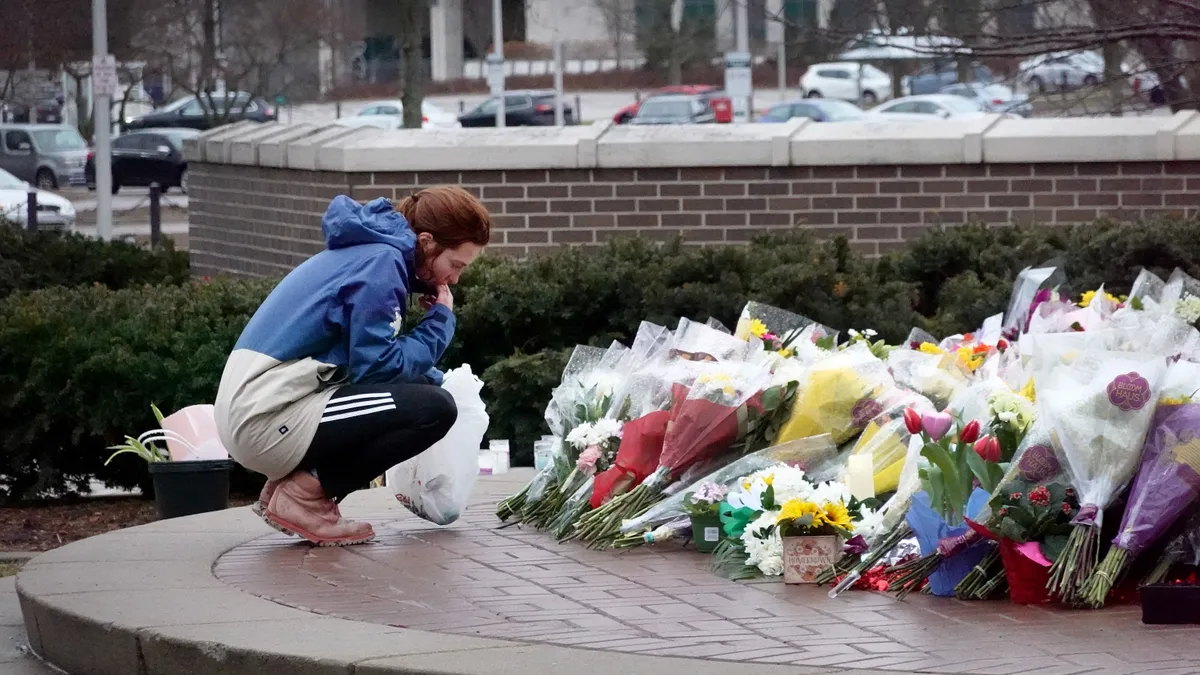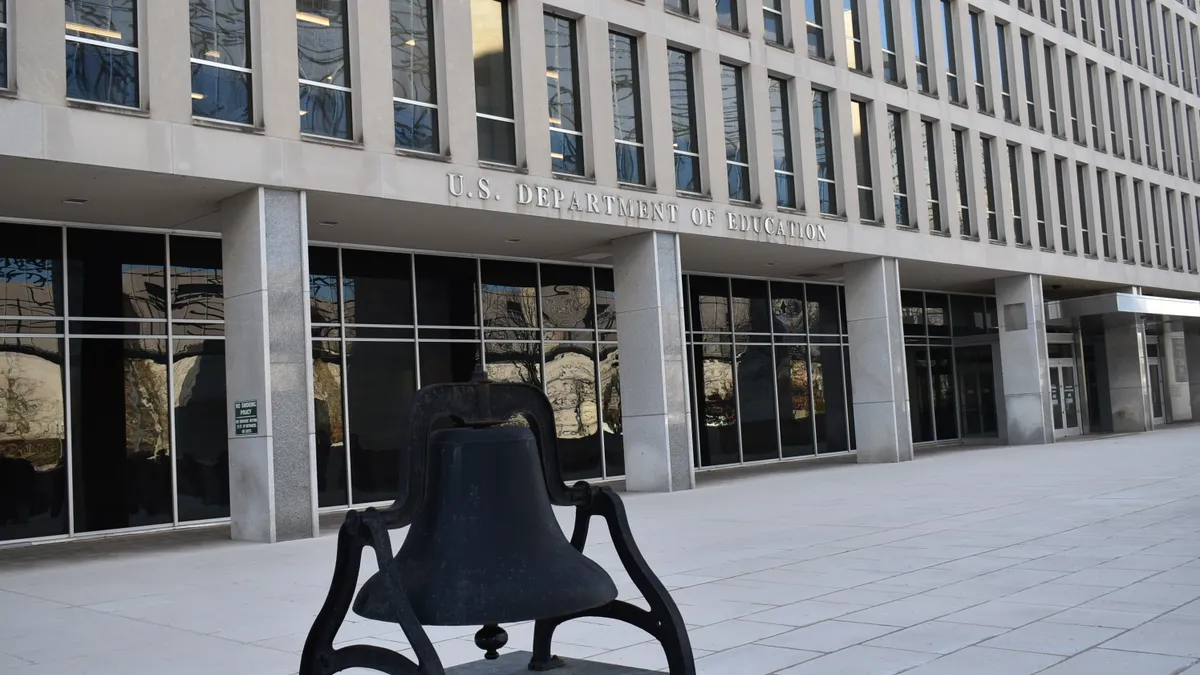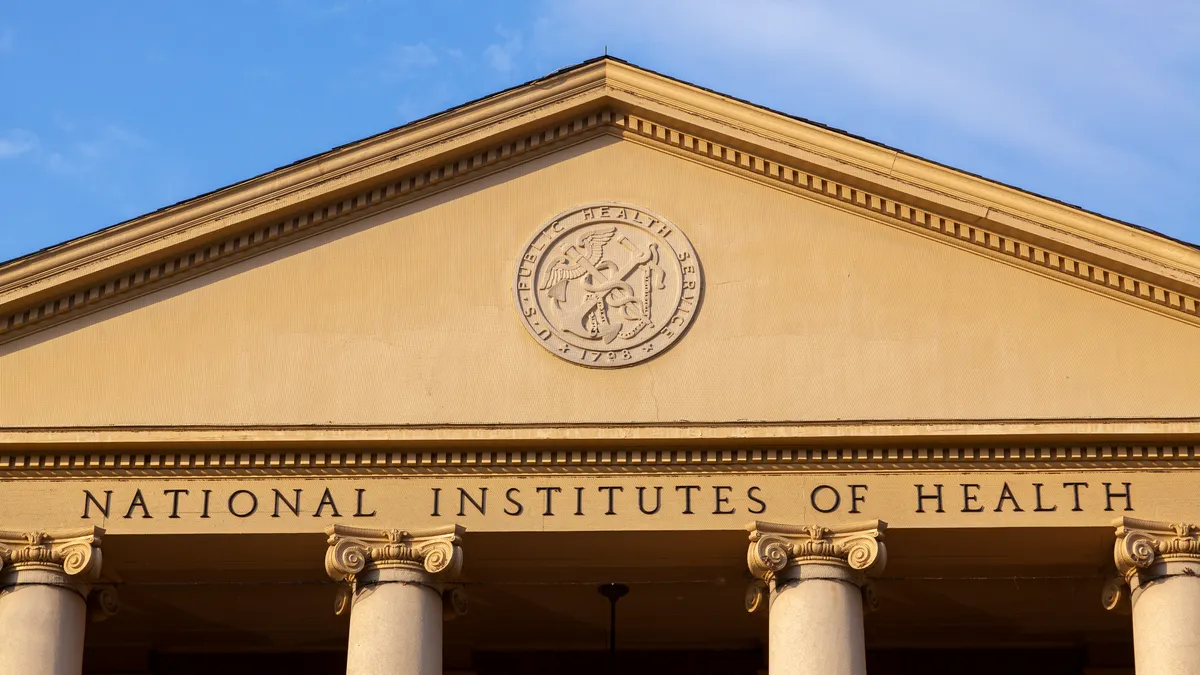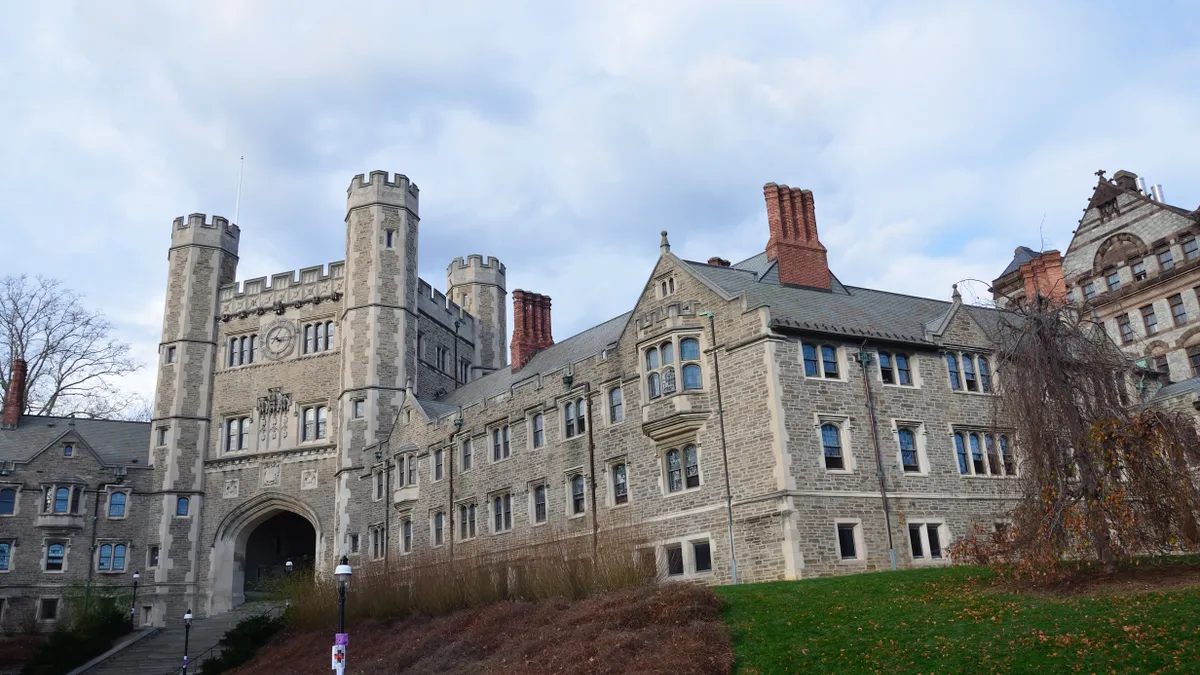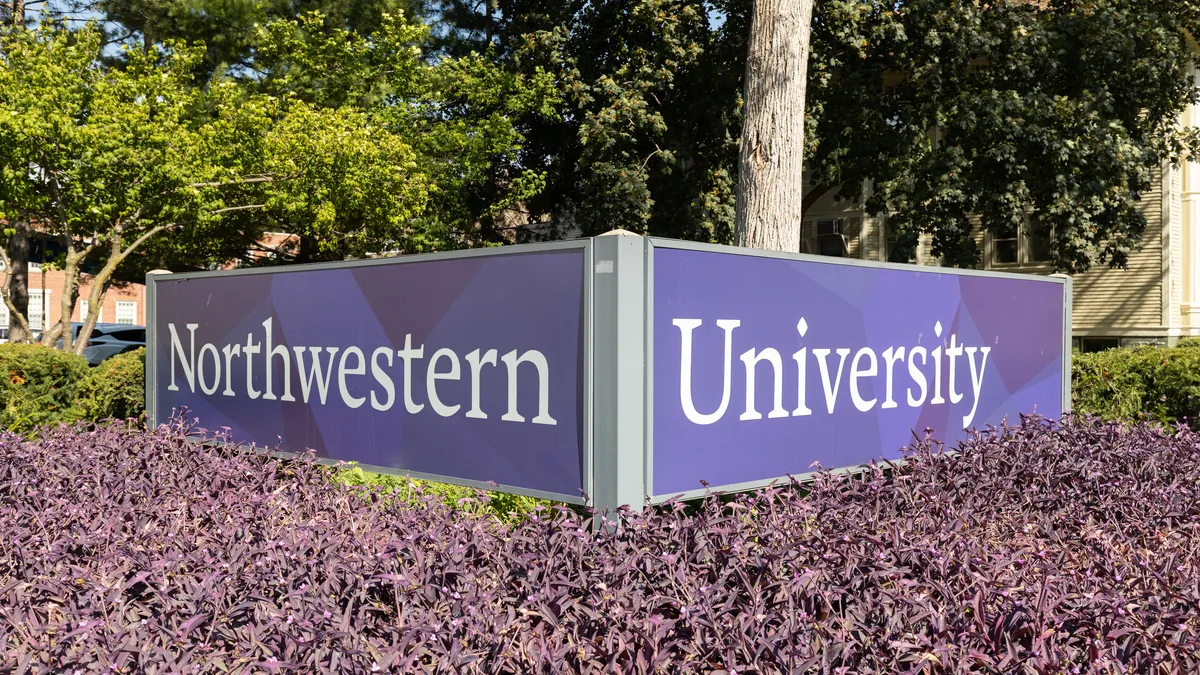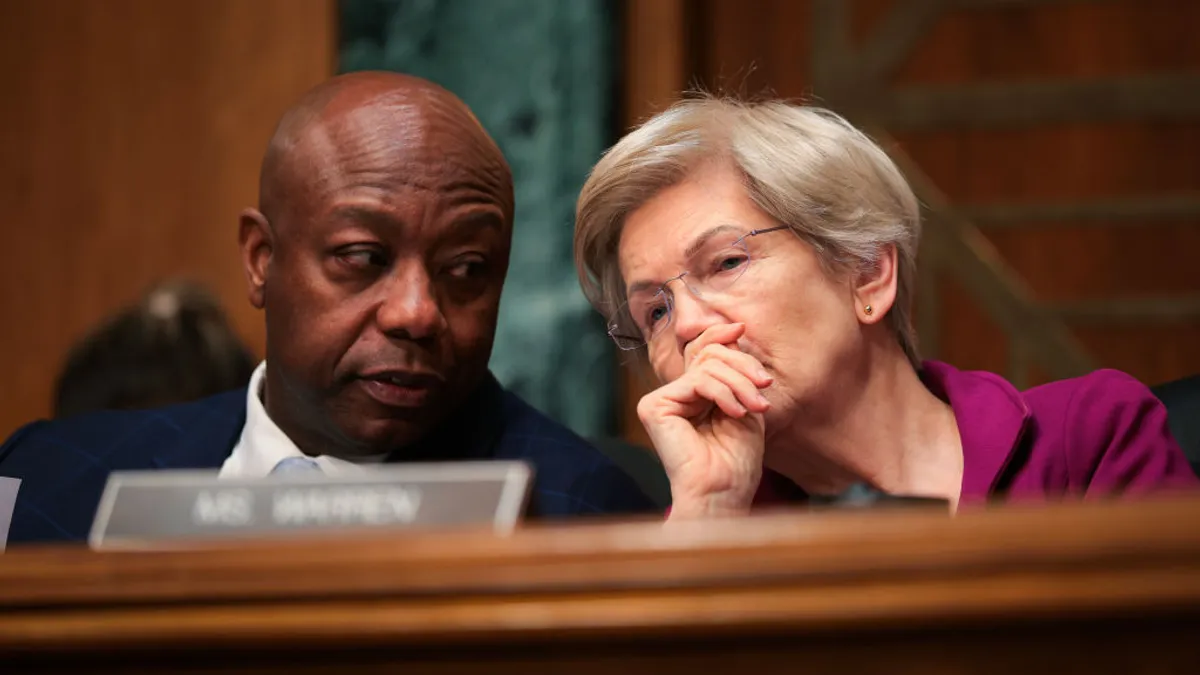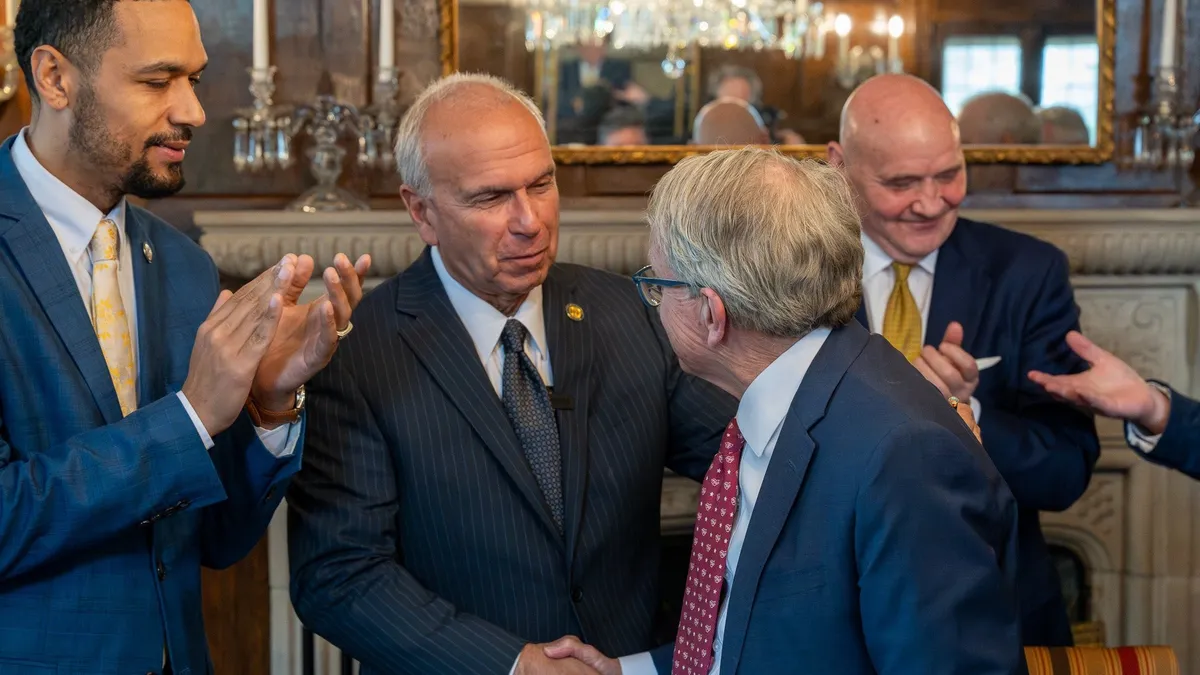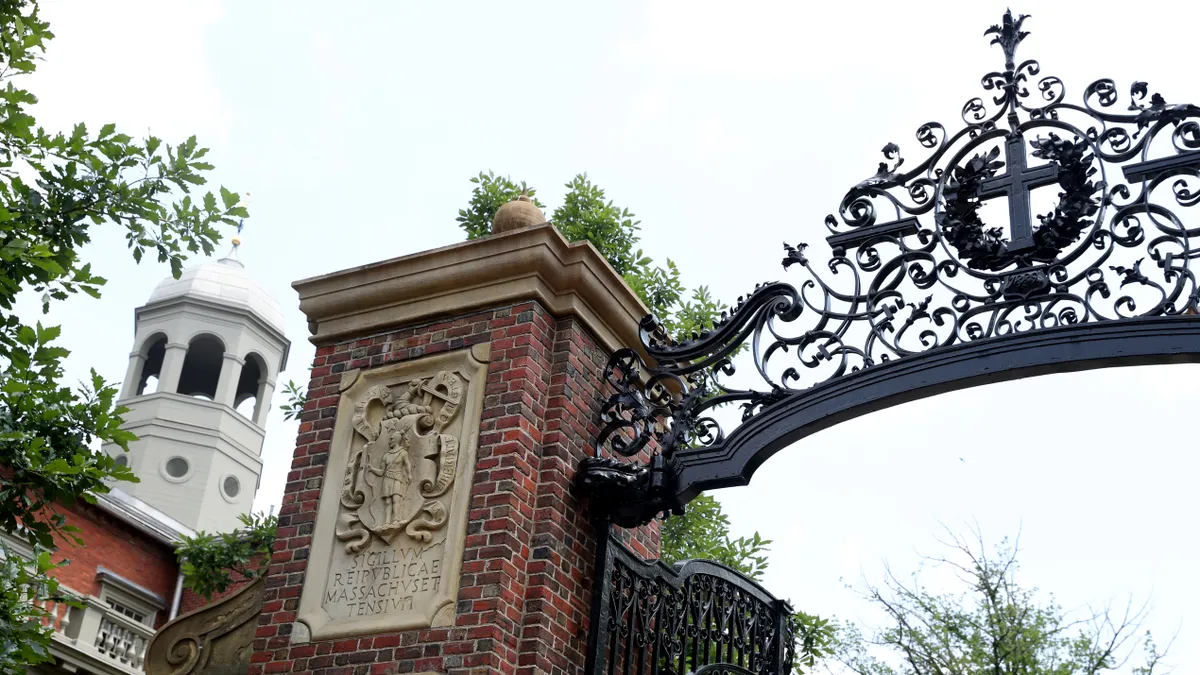Since a mass shooting at Michigan State University killed three students and injured five others earlier this year, the university has been working to protect students, faculty and staff from ever enduring another attack.
In the weeks after the Feb. 13 shooting, the university held a series of campus safety town halls with members of the community about improvements they wanted to see, said Dana Whyte, a spokesperson for the Michigan State Department of Police and Public Safety.
Following those sessions, the university’s president, chief of police and vice president of public safety announced four campus safety changes in early March, Whyte said. They included beefing up security and offering active violence incident training to all students, she said.
“We want to make sure that we're covering all areas and giving our community as many resources as possible,” said Whyte.
Michigan State is one of many colleges trying to secure their campuses and train students to respond to active shooter incidents in the hopes of preventing a mass shooting. As of April 25, there had been at least 173 mass shootings in the U.S. this year, according to the Gun Violence Archive. The archive defines mass shootings as incidents in which at least four victims were shot.
It's sad to say that everybody's left on their own to figure this out, because our policymakers have totally failed us.

Pedro Noguera
Dean of the University of Southern California’s School of Education
But there is no higher ed policy or strategy that can eliminate the possibility of a mass shooting, said Pedro Noguera, dean of the University of Southern California’s School of Education. And a lack of action by federal policymakers on gun control has left college leaders to develop strategies on their own, he said.
A number of colleges have responded to the nation's mass shooting epidemic by making their campuses much less accessible to the public, said Noguera, “which is unfortunate, because universities are public resources.”
School mass shooting experts say colleges could train campus communities to identify potential threats and better respond to mass violence events. However, such measures will still not guarantee anyone’s safety, Noguera said.
“It's sad to say that everybody's left on their own to figure this out, because our policymakers have totally failed us,” said Noguera. “Truthfully, there’s not a lot we can do.”
The shooter could be a student, employee or, like at Michigan State, it could be someone outside the campus community, he said. And, ultimately, “there are simply too many dangerous people with guns.”
Boosting security, warning students
Over the past 20 years, many colleges and universities have gotten more sophisticated with reconnaissance, response and communication protocols, according to Ron Avi Astor, social welfare professor at the University of California, Los Angeles. Astor, who studies school violence, also said colleges are working with law enforcement more efficiently
Michigan State’s new safety measures are one example of change implemented by universities in recent years.
Students, faculty and staff now need to use their school ID card to enter buildings between 6 pm and 7:30 am on weekdays and at all hours on weekends, said Whyte. Previously, all academic buildings were open while classes were in session.
We don't want to retraumatize our community after the events that we just went through.

Dana Whyte
Spokesperson for the Michigan State Department of Police and Public Safety
The university has also begun outfitting 1,300 classrooms with a new lock system, allowing instructors to secure their doors while still providing access to law enforcement and first responders. And the university plans to add to the more than 2,000 security cameras on campus to capture areas where “there could be a potential room for improvement,” Whyte said.
At the University of Virginia — where three school football players were killed and two others wounded by a gunman on a university charter bus in November returning to campus — security is also being heightened.
The university is adding public safety resources and adjusting how it manages threat-assessment processes and administers no-trespass orders, according to a March website post.
University officials plan to meet regularly with state and local officials to review crime data and weigh other initiatives that promote “a safe, healthy living and learning environment, including community access to mental health and youth engagement resources,” the post stated.
Many colleges have also implemented active shooter alert systems for their campus communities.
Students and staff at West Valley College, in Saratoga, California, received such an alert in March while police searched for a man who was reportedly carrying a long rifle. The message advised students and staff to run off campus, hide if they didn't know where the threat was or how many suspects there were, and fight if the intruder entered their hiding spot.
Michigan State is trying to boost its capabilities on that front as well, with a new 24-7 security operation center where staff will answer phones, issue alerts and monitor cameras.
Astor pointed out, however, that while surveillance and security are important, a heavy police presence and security measures can sometimes make students feel less safe. College leaders should balance police and safety with ensuring students continue to feel comfortable on campus and not as though they are under constant threat, he said.
Training and support
In addition to enhancing security, universities can help train students to respond to a mass shooter incident.
During the upcoming fall semester, Michigan State will strongly encourage all students, faculty and staff to take active violence incident training, which it currently offers upon request. The university is developing what the new training will look like, said Whyte.
“We don't want to retraumatize our community after the events that we just went through,” Whyte said. “So we’re giving everyone the option to have this training and take it when they're ready.”
Universities could train students as co-responders capable of providing first aid or crisis assistance, expanding a university’s response capacity, Astor said.
That includes talking down a potential shooter, helping someone who’s been shot, helping people evacuate a building, or knowing where to go if someone is making threats, he said. It can also include helping peers and colleagues dealing with post-traumatic stress disorder or mental health issues following a shooting.
“People have more of a sense of efficacy in the response, and not feeling that everything is dependent on law enforcement or everything is depending on their administration,” Astor said.
Noguera said colleges can also help employees identify students or staff who issue threats or may be at-risk of perpetuating violence.
“We've got to get better at identifying those individuals, so we get them help before it becomes an issue of violence that we have to contend with,” he said.
Often, people who commit acts of violence had made previous threats and were armed and dangerous — and others knew about it, said Noguera.
Still, it’s important for colleges to try and clarify what a potential mass shooter looks like, Astor said.
Many people are dealing with a range of mental health issues and there are hundreds of millions of guns in the U.S. But people with mental health issues are in fact more likely to be the victims of violence than the perpetrators, studies have found. And few people who have access to firearms become mass shooters, Astor said.
A mass shooter is someone who has no regard for the lives of others or their own life, according to Astor. Mass shootings themselves are forms of terrorism, meant to hurt and kill as many people as possible, he said. They're not perpetrated just because someone gained access to an AR-15.
Mass shooters often try to get media coverage. They put out manifestos, tell people about their mass shooting plans on websites, study prior mass shootings, and try to inflict more harm than previous shooters did, said Astor. The shooters have an obsession — perhaps a compulsion — with firearms, he said.
“That's not the same as depression. That’s not the same as somebody buying a gun,” Astor said.


